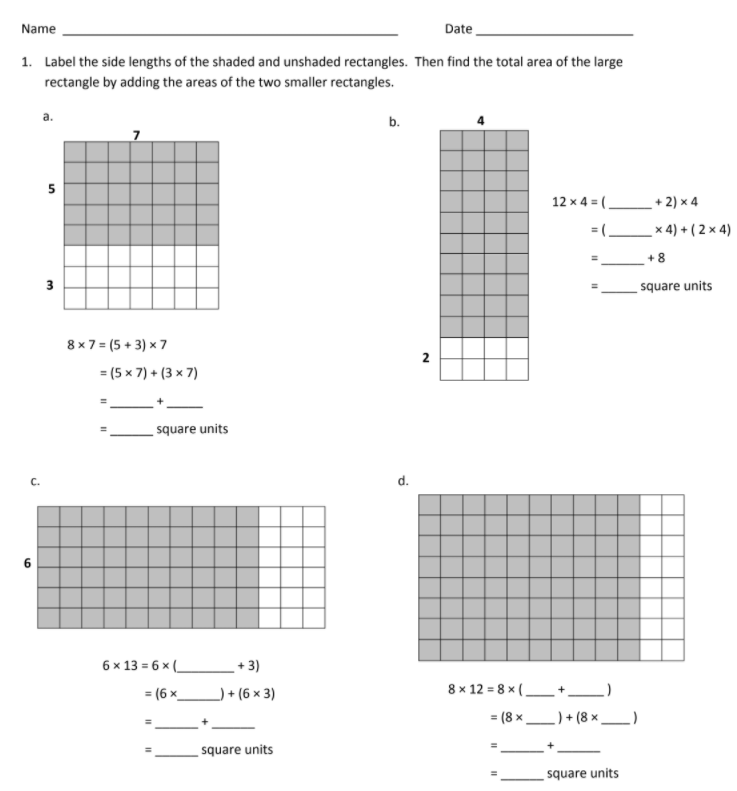 the area of rectangle using the distributive property" width="545" height="291" />
the area of rectangle using the distributive property" width="545" height="291" />Examples, solutions, and videos to help Grade 3 students learn how to apply the distributive property as a strategy to find the total area of a large rectangle by adding two products.
Common Core Standards: 3.MD.5, 3.MD.6, 3.MD.7a, 3.MD.7b, 3.MD.7d
 the area of rectangle using the distributive property" width="545" height="291" />
the area of rectangle using the distributive property" width="545" height="291" />
The following diagram gives some examples of how to use the distributive property to find the area of rectangles. Scroll down the page for more examples of using the distributive property to find the area of rectangles.
Application Problem
Sonya folds a 6 by 6 square inch piece of paper into 4 equal parts, shown below. What is the area of 1 of the parts?
Note: This problem reviews the concept of finding area.
We can break apart a 18 by 9 rectangle into two 9 by 9 rectangles. What other ways could we break apart this rectangle?
We could break it into one 10 by 9 rectangle and one 8 by 9 rectangle.
Lesson 10 Homework

Try the free Mathway calculator and problem solver below to practice various math topics. Try the given examples, or type in your own problem and check your answer with the step-by-step explanations.
We welcome your feedback, comments and questions about this site or page. Please submit your feedback or enquiries via our Feedback page.